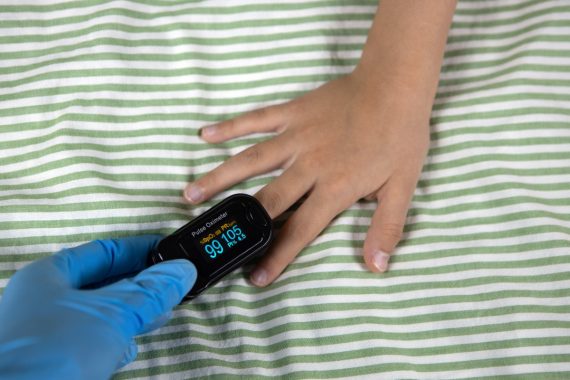GP practices will receive 4,000 pulse oximeters bought by NHS England to support child oximetry and help GPs assess children with respiratory conditions over the winter.
The pulse oximeters will be distributed by regional teams, NHS England announced in its primary care bulletin sent yesterday evening (4 November).
Links to information, training and guidance on the E-learning for Healthcare portal and a product support email will also be provided.
The bulletin said: ‘Measuring oximetry in young children can be challenging and the supplied equipment has been procured with reliability and ease of use in children in mind.’
NHS England said the distribution would provide a chance to understand the benefits of using pulse oximeters in primary care.
Qualitative evaluation of the project will inform ‘any future decisions on a wider roll-out’, it said.
A major report in July warned that outbreaks of influenza and respiratory syncytial virus (RSV) could lead to double the number of related hospital admissions this winter compared with a pre-pandemic year.
It said that primary care would experience particular pressure from an RSV outbreak, due to GPs seeing the majority of these patients, who are usually the under-fives.
Meanwhile, health chiefs issued a warning as childhood respiratory infections rose ahead of winter.
Outside of paediatrics, all 16-64s testing positive for Covid who are not double jabbed became eligible for NHS England’s Covid ‘Oximetry @home’ scheme in September.
Under the scheme, those with symptoms measure their oxygen saturation levels with a pulse oximeter for practice monitoring.
In January, NHS England said that Covid patients across the country would be discharged ‘earlier’ for remote GP management with pulse oximetry.
Click to complete relevant respiratory CPD modules on Pulse Learning.
Pulse October survey
Take our July 2025 survey to potentially win £1.000 worth of tokens
















Child is getting worse = go to A+E.
Not that difficult. This sounds like that smokescreen dodgy Hot Clinic idea and more GP work doesn’t it? More re-direct NHSE? Keep the patient on your books and GMC number is it?
What gets me is who hasn’t got an oximeter? 2 sitting in front of me now kids and adult size. And one in my visit bag. And a neonate one in the emegency trolley 12 feet away and a second neonate one in the treatment room about 50 feet away.
our local paediatric and A and E team state they are notoriously difficult to use and inaccurate and often a distraction
RR and clinical state much more valuable
The pulse oximeters will be distributed by regional teams, NHS England announced in it’s primary care bulletin sent yesterday evening (4 November).
It’s means it is.
The possessive form is “its”
It’s not that hard.